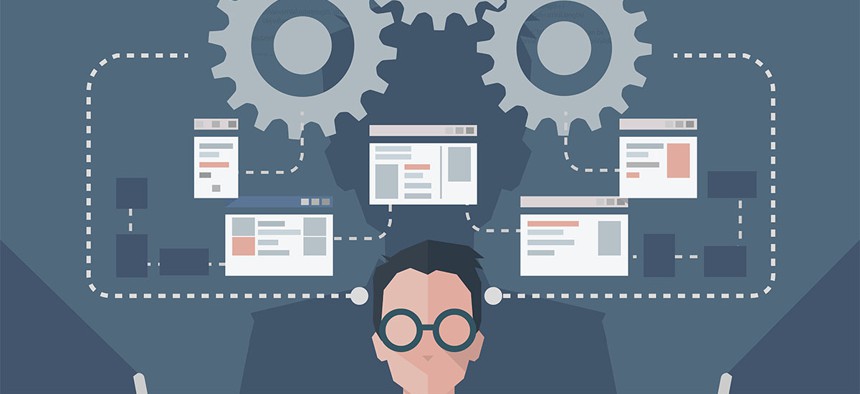Trending in Government: Robotic Process Automation

Danang Setiawan/Shutterstock.com
Any high-volume, high-touch, business-rule-driven, repeatable process is a candidate for RPA.
Teresa A. Weipert is executive vice president of Sutherland Government Solutions, a unit of Sutherland Global Services.
For companies that want to excel in the new digital economy, the business objectives of reliability, quality, cost-efficiency and responsive customer service are integral to success.
Industry has spent years developing technologies and processes to meet those objectives and improve operational capabilities. Commercial best practices is a phrase commonly used that distills those industry experiences into a working model for the government to reference and understand.
The lessons successful companies have learned and abided by in the private sector have not been lost on government. More and more, agencies are adopting proven commercial best practices to drive improvements and meet their mandated obligations to citizens.
Adopting commercial best practices includes integrating innovative technologies to catalyze operational excellence. Robotic Process Automation is a transformational area of technologies trending in the public sector.
The concept of RPA does not involve metallic humanoids with artificial intelligence (at least not yet). RPA, as described by The Institute for Robotic Process Automation, is the application of technology that allows analysts to configure computer software or a “robot” to capture and interpret existing applications for processing a transaction, manipulating data, triggering responses, and communicating with other digital systems.
RPA is a nonintrusive software tool technology. RPA units control a virtual keyboard and mouse and can navigate across screens. It can be customized to performance requirements and is scalable.
RPA is used widely in the private sector, by contact center processing models, insurance enrollment and billing, claims processing, accounts payables, invoicing and medical coding. Any high-volume, high-touch, business-rule-driven, repeatable process is a candidate for RPA.
RPA is a solution for legacy systems that are complex and costly to replace. It is not a separate platform. RPA will communicate across disparate legacy systems, and integrate a process largely driven by swivel chair (cut and paste) operations.
The benefits of RPA for government are numerous. RPA will enhance the speed of business processes, improve quality and improve reporting/visibility. RPA is especially useful for government customer service functions. Customer contact centers will now be automated and assimilated into enterprise service desk platforms that use multichannel contact tools such as phone, email, text, Web, mobile devices, or through self-service tools and agent assisted responses.
These software tools make the agents’ jobs easier by simplifying and augmenting their capabilities to respond to customer needs. With RPA, agencies can monitor and track progress of tickets to a higher degree that was not possible in the past.
Because of standardization, quality control (RPA systems are logged and fully auditable), and reduced process-cycle times, Robotic Process Automation benefits can lead to between 40% to 70 percent labor cost-reductions and near-zero error rates both with front-office (customer-facing) and back-office functions (no customer interaction). For the government, this is getting closer to the demand for outcome-based models that translates to better customer service (fewer citizen complaints).
Robotic Process Automation does not mean the digital machine era will replace the human element in the future of work. There is an important role for oversight and for creating automated rules and processes that help and enhance the quality of legacy systems.
RPA really is an enabler for efficient process, fewer mistakes and a more optimized workforce. And when it comes to keeping government programs cost-effective, streamlined and sustainable, RPA will play a growing role in the quality operations of government.
(Image via Danang Setiawan/Shutterstock.com)






 By
By